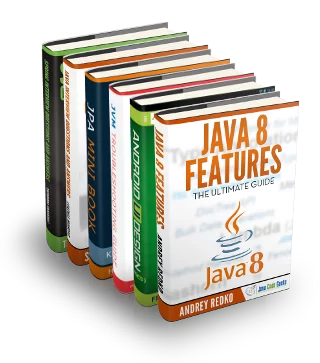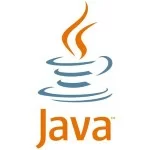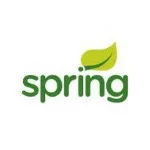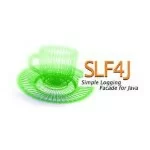RESTEasy Tutorial Part-1: Basics
Here I am going to show you how to develop a Simple RESTful Web Services application using RESTEasy and JBossAS7.1.1.FINAL.
Step#1: Configure RESTEasy dependencies using Maven.
01 02 03 04 05 06 07 08 09 10 11 12 13 14 15 16 17 18 19 20 21 22 23 24 25 26 27 28 29 30 31 32 33 34 35 36 37 38 39 40 41 42 43 44 45 46 47 48 49 50 51 52 53 54 | <project xmlns='http:maven.apache.orgPOM4.0.0' xmlns:xsi='http:www.w3.org2001XMLSchema-instance' xsi:schemaLocation='http:maven.apache.orgPOM4.0.0 http:maven.apache.orgmaven-v4_0_0.xsd'> <modelVersion>4.0.0<modelVersion> <groupId>com.sivalabs<groupId> <artifactId>resteasy-demo<artifactId> <version>0.1<version> <packaging>war<packaging> <name>resteasy-demo Maven Webapp<name> <build> <finalName>resteasy-demo<finalName> <build> <dependencies> <dependency> <groupId>junit<groupId> <artifactId>junit<artifactId> <version>4.8.2<version> <scope>test<scope> <dependency> <dependency> <groupId>org.jboss.resteasy<groupId> <artifactId>resteasy-jaxrs<artifactId> <version>2.3.2.FINAL<version> <scope>provided<scope> <dependency> <dependency> <groupId>org.jboss.resteasy<groupId> <artifactId>resteasy-jaxb-provider<artifactId> <version>2.3.2.FINAL<version> <scope>provided<scope> <dependency> <dependency> <groupId>org.jboss.resteasy<groupId> <artifactId>jaxrs-api<artifactId> <version>2.3.0.GA<version> <scope>provided<scope> <dependency> <dependency> <groupId>org.apache.httpcomponents<groupId> <artifactId>httpclient<artifactId> <version>4.1.2<version> <scope>provided<scope> <dependency> <dependencies> <project> |
Step#2: Configure RESTEasy in web.xml
01 02 03 04 05 06 07 08 09 10 11 12 13 14 15 16 17 18 19 20 21 22 23 24 25 26 27 | <web-app xmlns:xsi='http:www.w3.org2001XMLSchema-instance' xmlns='http:java.sun.comxmlnsjavaee' xmlns:web='http:java.sun.comxmlnsjavaeeweb-app_2_5.xsd' xsi:schemaLocation='http:java.sun.comxmlnsjavaee http:java.sun.comxmlnsjavaeeweb-app_3_0.xsd' id='WebApp_ID' version='3.0'> <listener> <listener-class>org.jboss.resteasy.plugins.server.servlet.ResteasyBootstrap<listener-class> <listener> <servlet> <servlet-name>Resteasy<servlet-name> <servlet-class>org.jboss.resteasy.plugins.server.servlet.HttpServletDispatcher<servlet-class> <servlet> <servlet-mapping> <servlet-name>Resteasy<servlet-name> <url-pattern>rest*<url-pattern> <servlet-mapping> <context-param> <param-name>resteasy.servlet.mapping.prefix<param-name> <param-value>rest<param-value> <context-param> <context-param> <param-name>resteasy.scan<param-name> <param-value>true<param-value> <context-param><web-app> |
Step#3: Create User domain class, MockUserTable class to store User objects in-memory for testing purpose and UserResource class to expose CRUD operations on User as RESTful webservices.
001 002 003 004 005 006 007 008 009 010 011 012 013 014 015 016 017 018 019 020 021 022 023 024 025 026 027 028 029 030 031 032 033 034 035 036 037 038 039 040 041 042 043 044 045 046 047 048 049 050 051 052 053 054 055 056 057 058 059 060 061 062 063 064 065 066 067 068 069 070 071 072 073 074 075 076 077 078 079 080 081 082 083 084 085 086 087 088 089 090 091 092 093 094 095 096 097 098 099 100 101 102 103 104 105 106 107 108 109 | package com.sivalabs.resteasydemo;import java.util.Date;import javax.xml.bind.annotation.XmlAccessType;import javax.xml.bind.annotation.XmlAccessorType;import javax.xml.bind.annotation.XmlRootElement;@XmlRootElement@XmlAccessorType(XmlAccessType.FIELD)public class User { private Integer id; private String name; private String email; private Date dob; setters and getters}package com.sivalabs.resteasydemo;import java.util.ArrayList;import java.util.Date;import java.util.HashMap;import java.util.List;import java.util.Map;import com.sivalabs.resteasydemo.User;public class MockUserTable { private static Map<Integer, User> USER_MAP = new HashMap<Integer, User>(); static { USER_MAP.put(1, new User(1,'admin','admin@gmail.com',new Date())); USER_MAP.put(2, new User(2,'test','test@gmail.com',new Date())); } public static void save(User user){ USER_MAP.put(user.getId(), user); } public static User getById(Integer id){ return USER_MAP.get(id); } public static List<User> getAll(){ List<User> users = new ArrayList<User>(USER_MAP.values()); return users; } public static void delete(Integer id){ USER_MAP.remove(id); } }package com.sivalabs.resteasydemo;import java.util.List;import javax.ws.rs.DELETE;import javax.ws.rs.GET;import javax.ws.rs.POST;import javax.ws.rs.Path;import javax.ws.rs.PathParam;import javax.ws.rs.Produces;import javax.ws.rs.core.GenericEntity;import javax.ws.rs.core.MediaType;import javax.ws.rs.core.Response;import com.sivalabs.resteasydemo.MockUserTable;@Path('users')@Produces(MediaType.APPLICATION_XML)public class UserResource { @Path('') @GET public Response getUsersXML() { List<User> users = MockUserTable.getAll(); GenericEntity<List<User>> ge = new GenericEntity<List<User>>(users){}; return Response.ok(ge).build(); } @Path('{id}') @GET public Response getUserXMLById(@PathParam('id') Integer id) { return Response.ok(MockUserTable.getById(id)).build(); } @Path('') @POST public Response saveUser(User user) { MockUserTable.save(user); return Response.ok('<status>success<status>').build(); } @Path('{id}') @DELETE public Response deleteUser(@PathParam('id') Integer id) { MockUserTable.delete(id); return Response.ok('<status>success<status>').build(); }} |
Step#6: JUnit TestCase to test the REST Webservice.
01 02 03 04 05 06 07 08 09 10 11 12 13 14 15 16 17 18 19 20 21 22 23 24 25 26 27 28 29 30 31 32 33 34 35 36 37 38 39 40 41 42 43 44 45 46 47 48 49 50 51 52 53 54 55 56 57 58 59 | package com.sivalabs.resteasydemo;import java.util.List;import org.jboss.resteasy.client.ClientRequest;import org.jboss.resteasy.client.ClientResponse;import org.jboss.resteasy.util.GenericType;import org.junit.Assert;import org.junit.Test;import com.sivalabs.resteasydemo.User;public class UserResourceTest { static final String ROOT_URL = 'http:localhost:8080resteasy-demorest'; @Test public void testGetUsers() throws Exception { ClientRequest request = new ClientRequest(ROOT_URL+'users'); ClientResponse<List<User>> response = request.get(new GenericType<List<User>>(){}); List<User> users = response.getEntity(); Assert.assertNotNull(users); } @Test public void testGetUserById() throws Exception { ClientRequest request = new ClientRequest(ROOT_URL+'users1'); ClientResponse<User> response = request.get(User.class); User user = response.getEntity(); Assert.assertNotNull(user); } @Test public void testSaveUser() throws Exception { User user = new User(); user.setId(3); user.setName('User3'); user.setEmail('user3@gmail.com'); ClientRequest request = new ClientRequest(ROOT_URL+'users'); request.body('applicationxml', user); ClientResponse<String> response = request.post(String.class); String statusXML = response.getEntity(); Assert.assertNotNull(statusXML); } @Test public void testDeleteUser() throws Exception { ClientRequest request = new ClientRequest(ROOT_URL+'users2'); ClientResponse<String> response = request.delete(String.class); String statusXML = response.getEntity(); Assert.assertNotNull(statusXML); }} |
Step#7: To test the REST service we can use the REST Client Tool.
You can download REST Client Tool at http://code.google.com/a/eclipselabs.org/p/restclient-tool/
Important Things to Keep in mind:
1. org.jboss.resteasy.plugins.server.servlet.ResteasyBootstrap Listener should be registered before any other listener.
2. You should configure resteasy.servlet.mapping.prefix <context-param> if the HttpServletDispatcher servlet url-pattern is anything other than /*
Continue to the second part of this tutorial.
Reference: RESTEasy Tutorial Part-1: Basics from our JCG partner Siva Reddy at the My Experiments on Technology blog.






Guess you need to at this to the pom.xml to make it work:
”
jboss
http://repository.jboss.org/nexus/content/groups/public-jboss/
“
The code has hundreds of errors. when executed. can you please post the code which actually works so that I can utilise the resteasy in my own applications. org.jboss.resteasy.plugins.providers.jaxb.JAXBUnmarshalException: Unable to find JAXBContext for media type: text/html;charset=”iso-8859-1″ at org.jboss.resteasy.plugins.providers.jaxb.CollectionProvider.readFrom(CollectionProvider.java:89) at org.jboss.resteasy.core.interception.MessageBodyReaderContextImpl.proceed(MessageBodyReaderContextImpl.java:105) at org.jboss.resteasy.plugins.interceptors.encoding.GZIPDecodingInterceptor.read(GZIPDecodingInterceptor.java:61) at org.jboss.resteasy.core.interception.MessageBodyReaderContextImpl.proceed(MessageBodyReaderContextImpl.java:108) at org.jboss.resteasy.client.core.BaseClientResponse.readFrom(BaseClientResponse.java:398) at org.jboss.resteasy.client.core.BaseClientResponse.getEntity(BaseClientResponse.java:346) at org.jboss.resteasy.client.core.BaseClientResponse.getEntity(BaseClientResponse.java:307) at com.sivalabs.resteasydemo.UserResourceTest.testGetUsers(UserResourceTest.java:28) at sun.reflect.NativeMethodAccessorImpl.invoke0(Native Method) at sun.reflect.NativeMethodAccessorImpl.invoke(Unknown Source) at sun.reflect.DelegatingMethodAccessorImpl.invoke(Unknown Source) at java.lang.reflect.Method.invoke(Unknown Source) at org.junit.runners.model.FrameworkMethod$1.runReflectiveCall(FrameworkMethod.java:44) at org.junit.internal.runners.model.ReflectiveCallable.run(ReflectiveCallable.java:15) at org.junit.runners.model.FrameworkMethod.invokeExplosively(FrameworkMethod.java:41) at org.junit.internal.runners.statements.InvokeMethod.evaluate(InvokeMethod.java:20) at org.junit.runners.BlockJUnit4ClassRunner.runNotIgnored(BlockJUnit4ClassRunner.java:79) at org.junit.runners.BlockJUnit4ClassRunner.runChild(BlockJUnit4ClassRunner.java:71) at org.junit.runners.BlockJUnit4ClassRunner.runChild(BlockJUnit4ClassRunner.java:49) at org.junit.runners.ParentRunner$3.run(ParentRunner.java:193) at org.junit.runners.ParentRunner$1.schedule(ParentRunner.java:52) at org.junit.runners.ParentRunner.runChildren(ParentRunner.java:191) at org.junit.runners.ParentRunner.access$000(ParentRunner.java:42) at org.junit.runners.ParentRunner$2.evaluate(ParentRunner.java:184) at org.junit.runners.ParentRunner.run(ParentRunner.java:236) at org.eclipse.jdt.internal.junit4.runner.JUnit4TestReference.run(JUnit4TestReference.java:49) at org.eclipse.jdt.internal.junit.runner.TestExecution.run(TestExecution.java:38) at org.eclipse.jdt.internal.junit.runner.RemoteTestRunner.runTests(RemoteTestRunner.java:467) at org.eclipse.jdt.internal.junit.runner.RemoteTestRunner.runTests(RemoteTestRunner.java:683) at… Read more »
Could you please update your tutorials for resteasy-jaxrs for version 3.0.16 (i.e for 3.0.x) ? I think 3.x version has made lots of changes in their API’s, your updated tutorial will help all your followers to understand better. Please do the needful.